Indigenous Education Month at the ROM
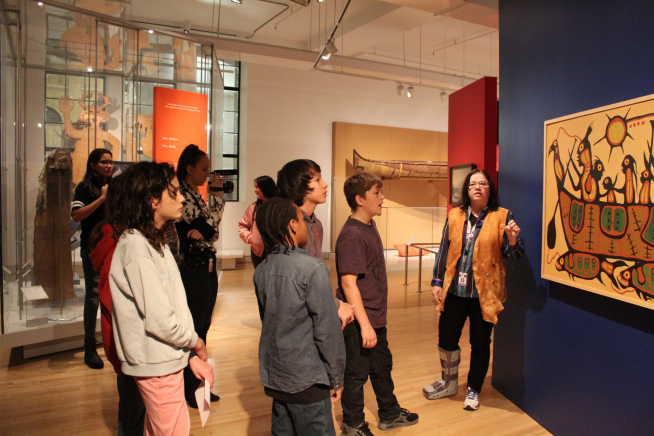
By Summer Catt, Kiowa Wind Memorial Indigenous Youth Intern
In celebration of Indigenous Education Month in November, the ROM Learning Department presented special events for school groups including Hoop Dancing led by Ryan Runearth, Treaty Teaching led by Akeesha Nadjiwon, Inuit Games led by Joshua Stribbell and Darryl Day, and Métis Fiddling led by Alyssa Delbaere-Sawchuk. Either before or after these workshops, the students engaged in gallery tours led by ROM Indigenous Knowledge Resource Teachers and ROM Teachers of the Daphne Cockwell Gallery dedicated to First Peoples art & culture.
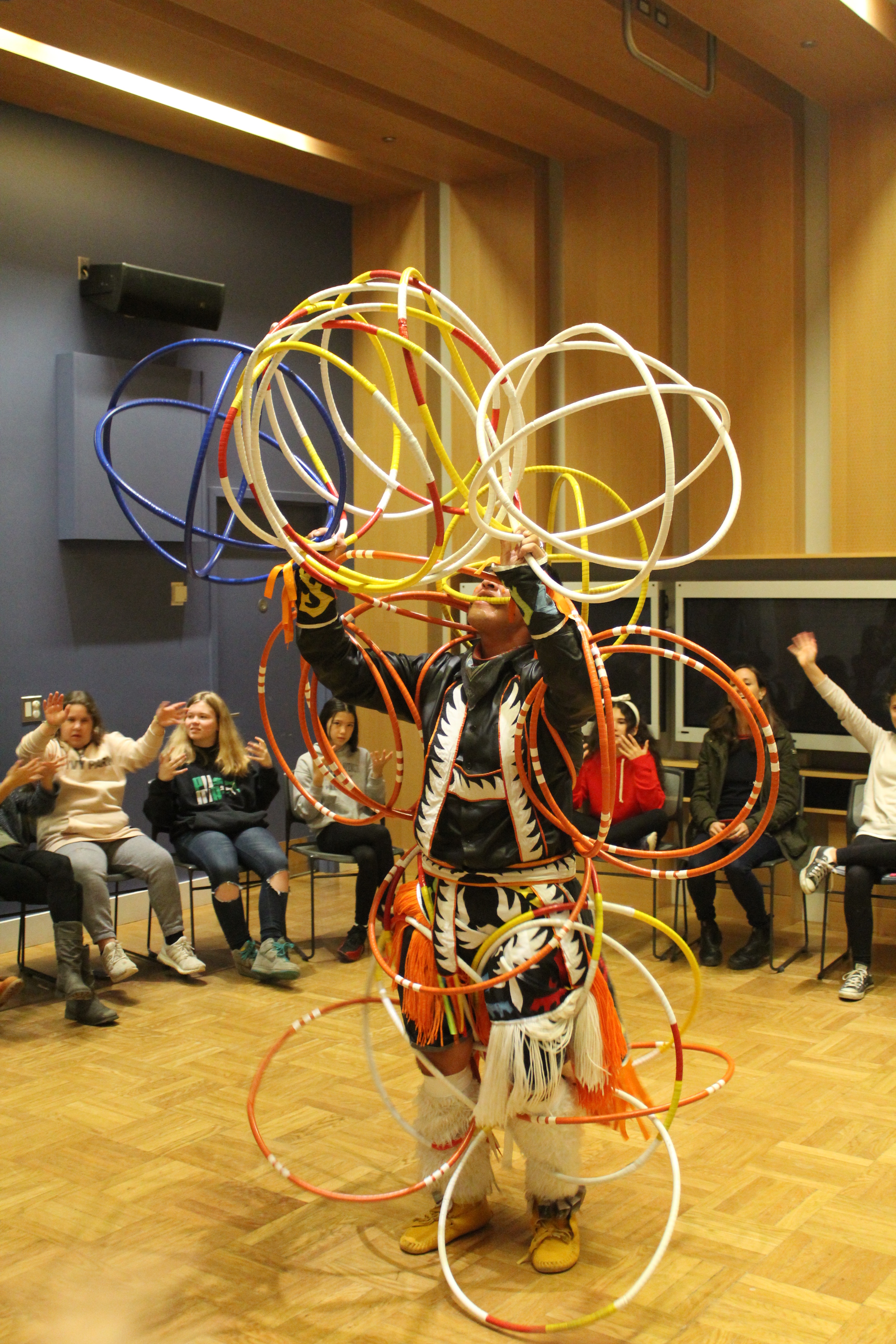
For the first special event, Hoop Dancing, Ryan Runearth of Swan Lake First Nation taught a few teachings and some history of hoop dancing. Although the exact origins of the hoop dance are not fully known, it is thought to have come from the southern United States in the New Mexico area. The first hoops were made of willow wood bent to form a circle. The students first watched as Ryan showed them how he performs, then they got a chance to try it for themselves with a few hoops each.
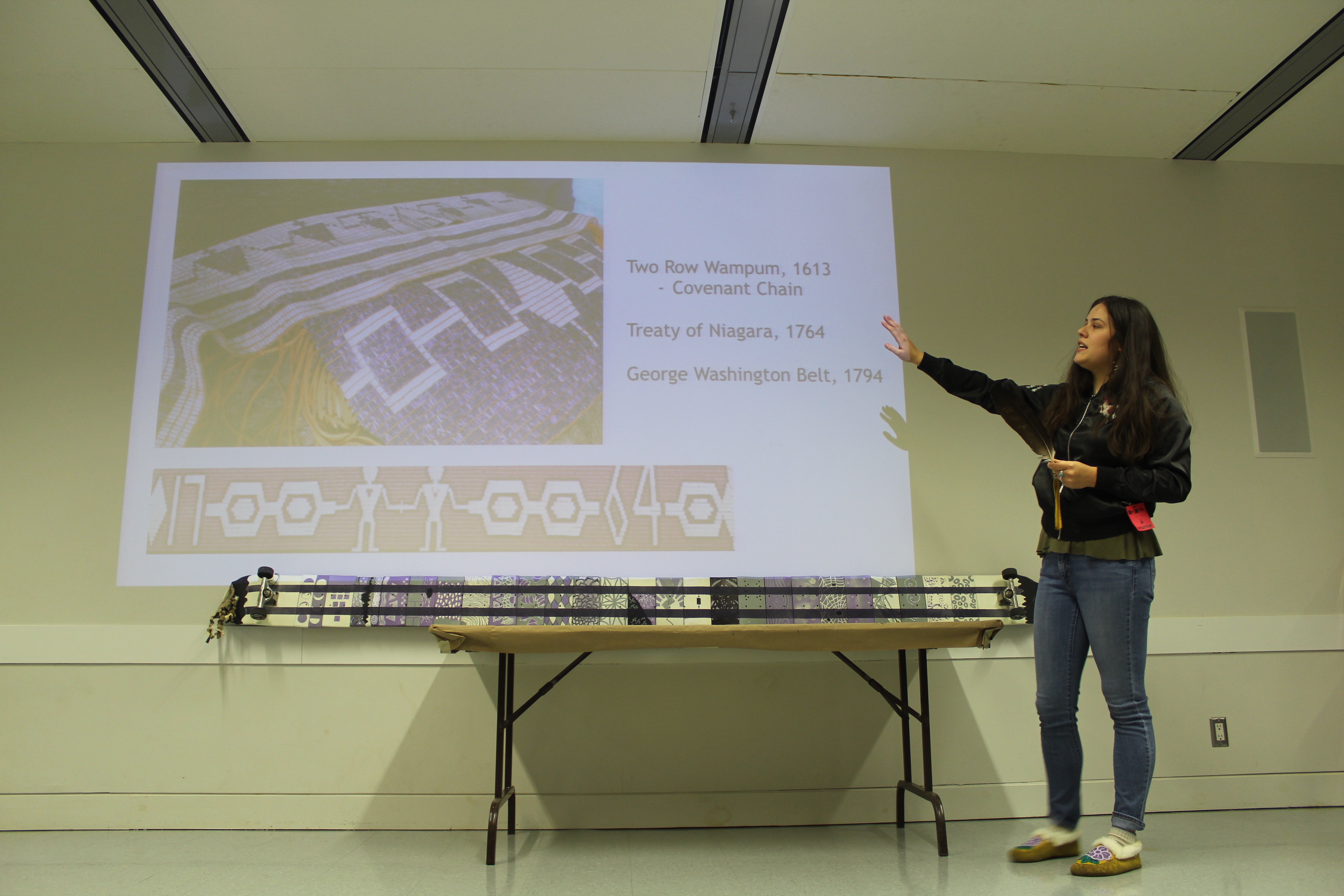
During the Treaty Teachings workshop, Akeesha Nadjiwon of Manitou Rapids First Nation started by doing a general overview of Indigenous philosophies and a few of our basic teachings. She then talked about some of the treaties in this area and the history of them. One of the schools who attended the workshop, Oasis Skateboard Factory, presented a skateboard in the likeness of a two-row wampum to the ROM. The traditional Two Row Wampum was made in 1613, making it 404 years old and predating confederation by 254 years. It was made as an agreement made between the Haudenosaunee and the Dutch. Originally, the Dutch proposed a paternal agreement where the Dutch would be like the parents and the Haudenosaunee would be the children. The Haudenoshaunee rejected this idea and proposed a relationship that both parties would be looked at as equal siblings. The two white rows represent the Dutch in their vessel and the Haudenoshounee in their canoes traveling down a river. They are parallel to represent that the two groups shall not interfere with each other.
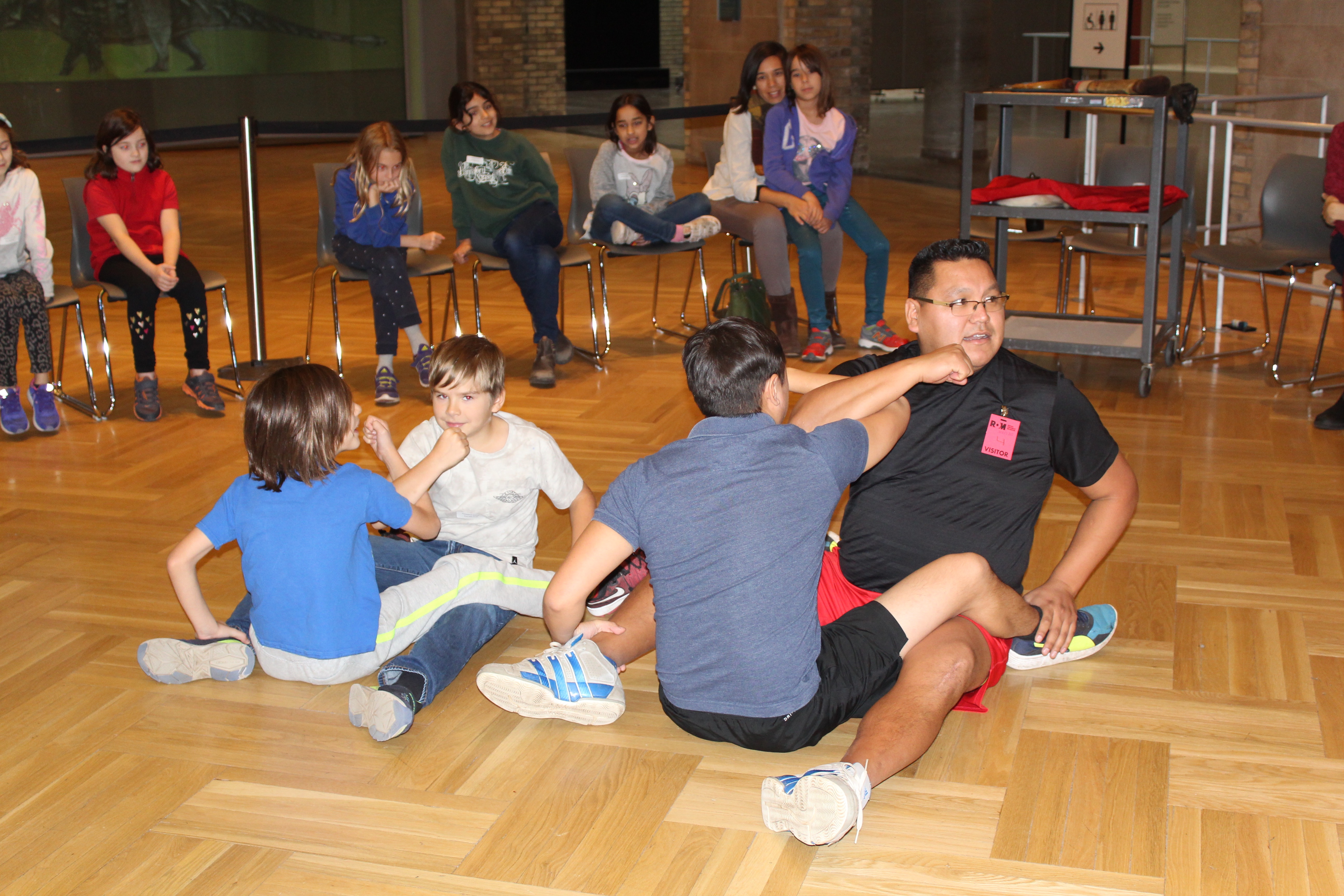
During the Inuit Games special event, the Inuit facilitators Joshua Stribbell and Darryl Day explained that the games build the physical and mental skills needed for hunting and survival in the Arctic. The facilitators also said that the Inuit people have their own games event where people compete against each other every couple of years. All of the students that were part of this event were super engaged in all of the games that they were taught. Some of the games that were showcased were High Kick, Arm Pull, Finger Pull, and Leg Wrestle.
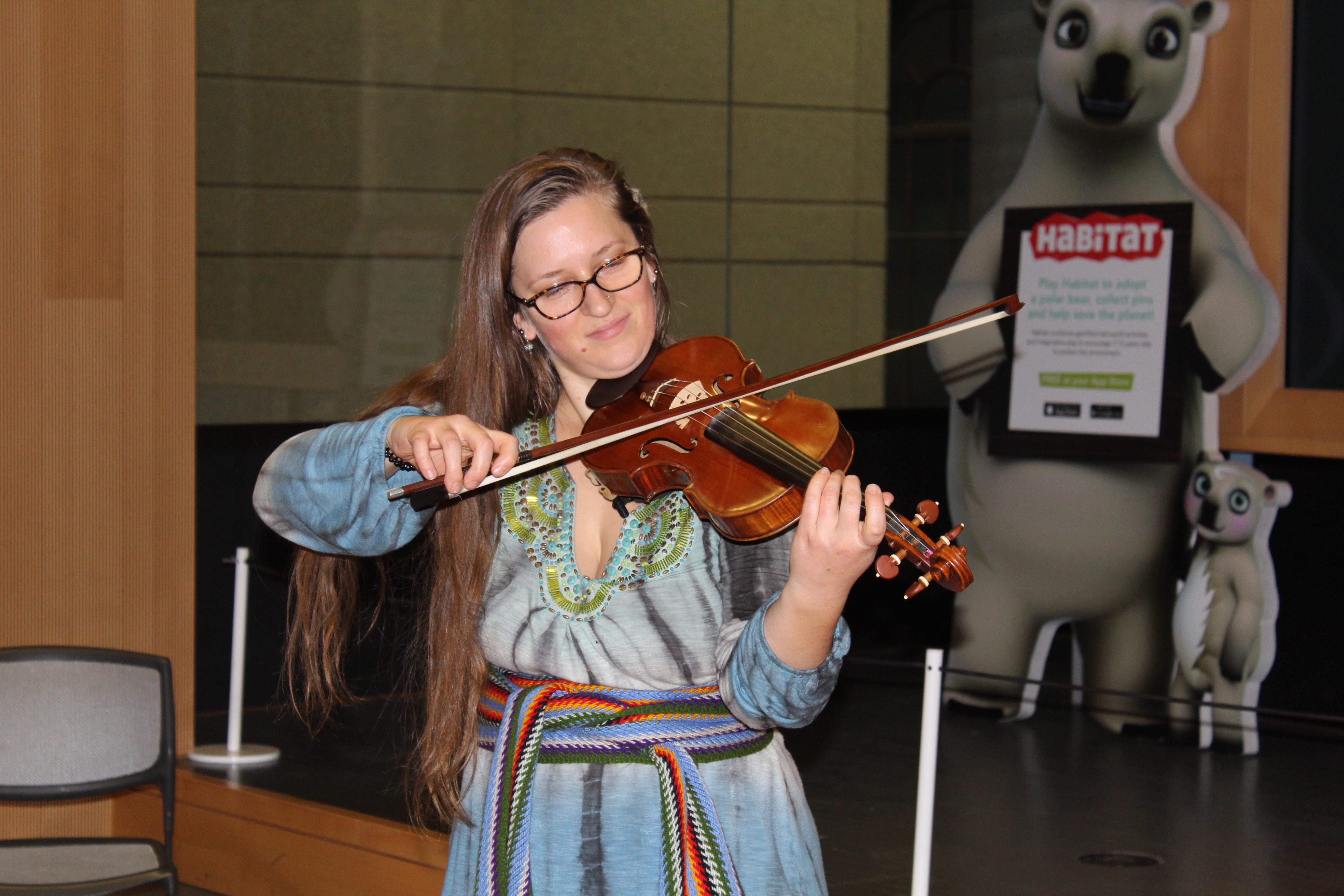
The Métis event began with Métis fiddler Alyssa Delbaere-Sawchuk giving a brief history of the Métis people, and after that, the music began. Alyssa played a couple songs on the fiddle and got the students to keep the beat and learn a short song. After the music, some ancestral objects were brought out for the students to handle including a Métis sash, beaver pelt, and a hooked knife.
For the last two years, these Indigenous Education Month special events in November were planned with the intention to decolonize and indigenize the ROM’s educational programming. Throughout the planning of these events, it was important to all involved that they were all highly interactive. The ROM’s Indigenous Advisory Circle want to ensure that the Indigenous cultures presented were led by Indigenous artists, knowledge carriers, and youth, and that it is a learning experience for everyone involved.
